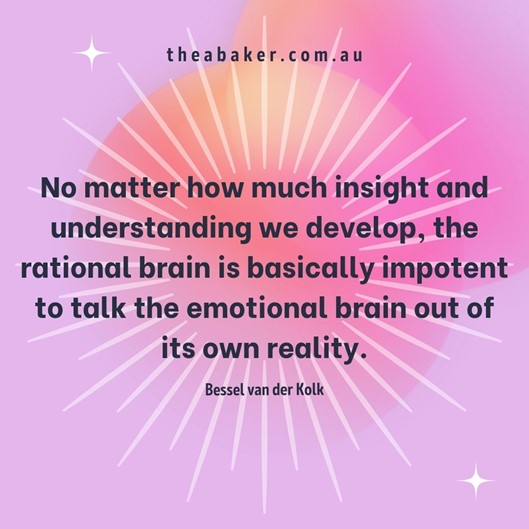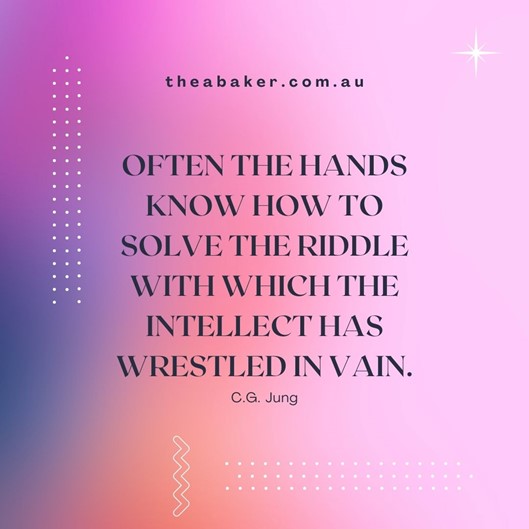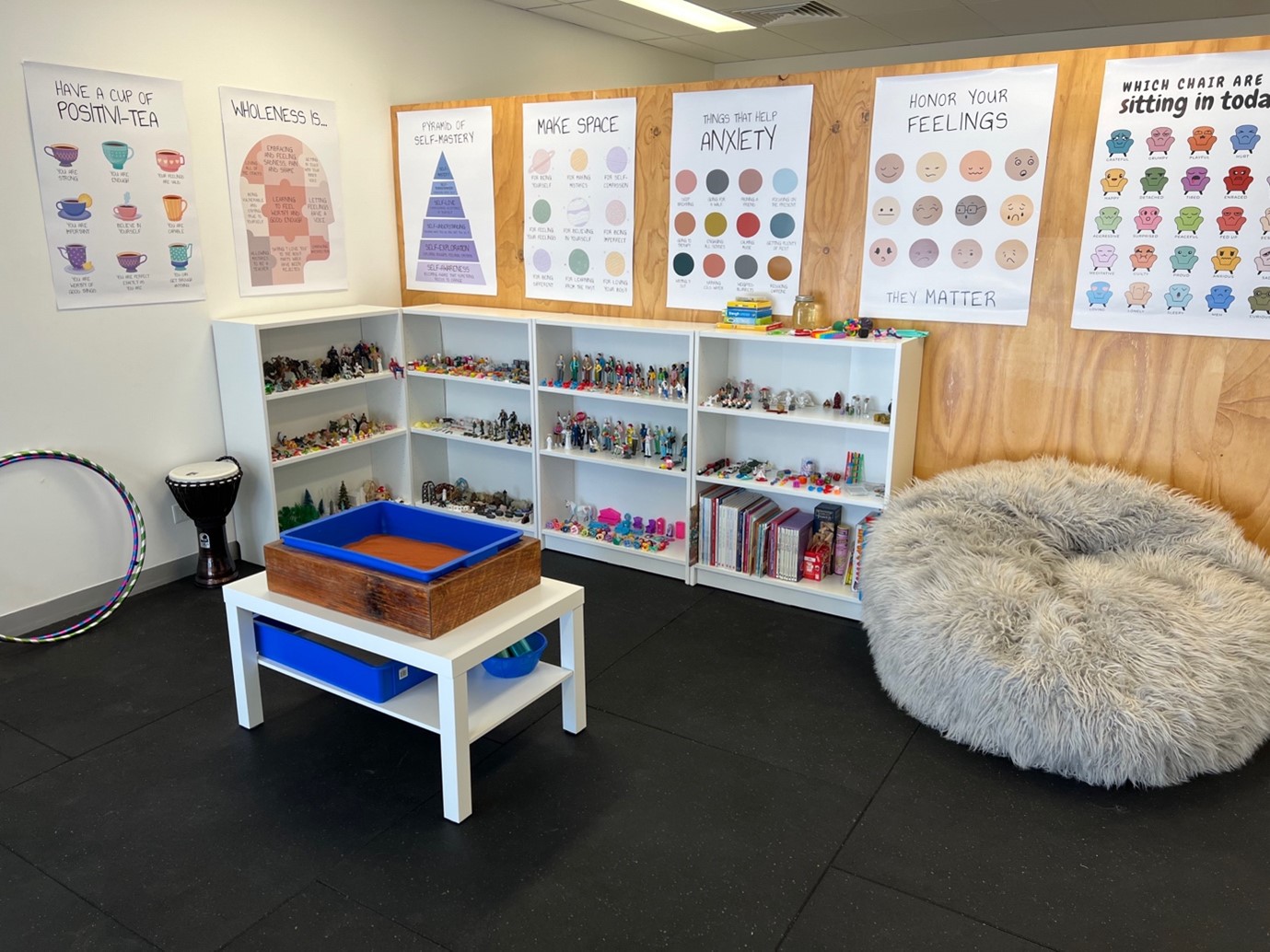Creative therapy spaces
Creative therapy spaces
We are firm believers at Thea Baker Wellbeing (TBW) that when it comes to healing there are a wealth of non-talk therapies that are not only strongly evidence-based but are also incredibly effective psychotherapeutic modalities. When it comes to working with implicit memories (things we don’t recall, picture-based memories of) that our bodies, beliefs and behaviours are strongly affected by, it makes sense that we often struggle to find words to explain what we are trying to express. Kind of makes talk-therapy a bit pointless.
I personally come from a body-based approach to working with trauma and am utterly fascinated to see how our muscles, connective tissue and postural responses show up in a therapeutic context. I think it’s why I found that CBT literally hurt my head when I was studying it during my master’s degree. It’s too cognitive, too top-down for me. Our body knows. Our emotional responses are not only valid but they’re a way in to understand or make sense of our traumatic experiences.
I’m so excited to be surrounded by some amazing likeminded therapists at TBW. We all have our own passion spaces within this bottom-up approach to therapy where I’m all about the body (so much so I’m about to start on a PhD in this space – more on that little project later), some other members of the team are trained in some other equally amazing psychotherapies that are very creative in nature so I thought I’d spend a few weeks highlighting some of the awesome modalities you can access at TBW.
Sandtray therapy:
Sandtray therapy is in a creative and primarily non-verbal form of therapy, that makes use of a sandtray, toy figures, and water, to create scenes of miniature worlds that reflect a person’s inner thoughts, struggles, and concerns. This form of play therapy is practised along with talk therapy, using the sandbox and figures as communication tools. It awakens creativity and playfulness.
Sandtray therapy can access things that are deeply unconscious, inaccessible, forgotten and/or difficult to express in words. Often the unconscious can become more visible, bringing it into the conscious. Now with awareness we can make choices rather than reacting from our subconscious. Sandtray supports healing, while words and talking may have taken much longer.
Sandtray is suitable for children and adults, even with couples and it has various therapeutic goals. It can also be used as a personal development journey, setting no goals and allowing the subconscious to emerge.
Sandtray Therapy for Children:
Sandtray therapy is highly successful with children of all ages presenting with various concerns, often allowing them to process concerns they didn’t realise were impacting them. To an observer it may just look like they are playing. Children are often asked by adults to explain or verbalise their behaviours or feelings, but more often that not this information is outside of the child’s awareness. The non-verbal nature of Sandtray therapy can allow them to feel comfortable to express themselves in play, which can offer insights into what is going on for them. By recreating or playing out scenes or events, over time the child can come to find solutions to the problems they are facing.
Nina and Jen are both trained in Sandtray therapy.
Art therapy:
Art therapy is a technique rooted in the idea that creative expression can foster healing and mental well-being. People have been relying on the arts for communication, self-expression, and healing for thousands of years. But art therapy didn’t start to become a formal program until the 1940s.
The goal of art therapy is to utilise the creative process to help people explore self-expression and therefore find new ways to gain person insight and develop new coping skills. The process of creating art in a therapeutic context helps people explore their emotions, develop self-awareness, cope with stress, boost self-esteem, and work on social skills.
As clients create art, they might analyse what they have made and how it makes them feel. Through exploring their art, people can create connections to themes or conflicts that might be affecting their thoughts, emotions and behaviours.
An art therapist may use a variety of art methods, including drawing, painting, sculpture, and collage with clients ranging from young children to older adults. Clients who have experienced emotional trauma, physical violence, domestic abuse, anxiety, depression, and other psychological issues can benefit from expressing themselves creatively.
Jen is trained in art therapy.
TBW’s creative space at the Croydon practice:
If you would like to explore some creative approaches to therapy, we have a team of therapists at Thea Baker Wellbeing and we have IMMEDIATE availability – please reach out to us at: hello@theabaker.com.au / 03 9077 8194.



